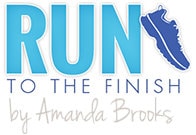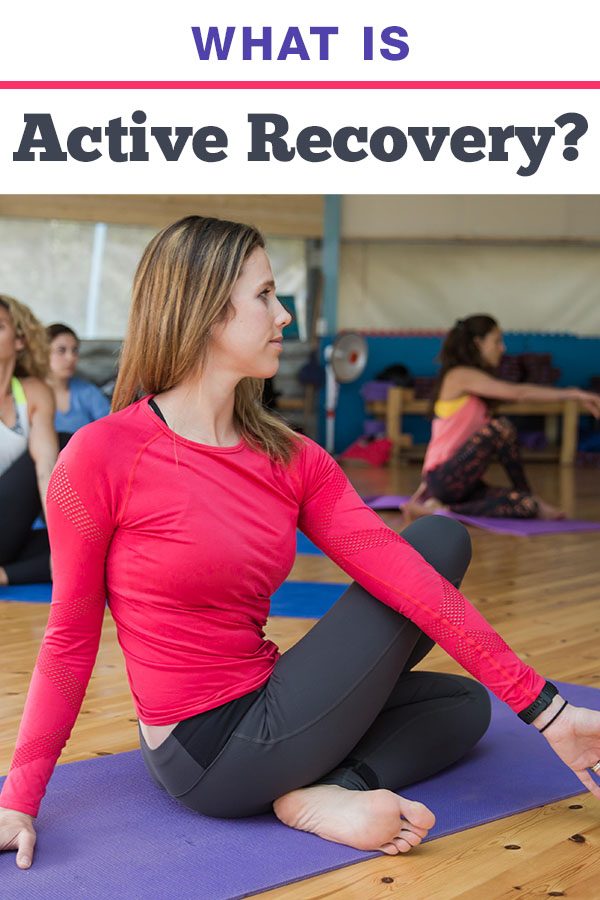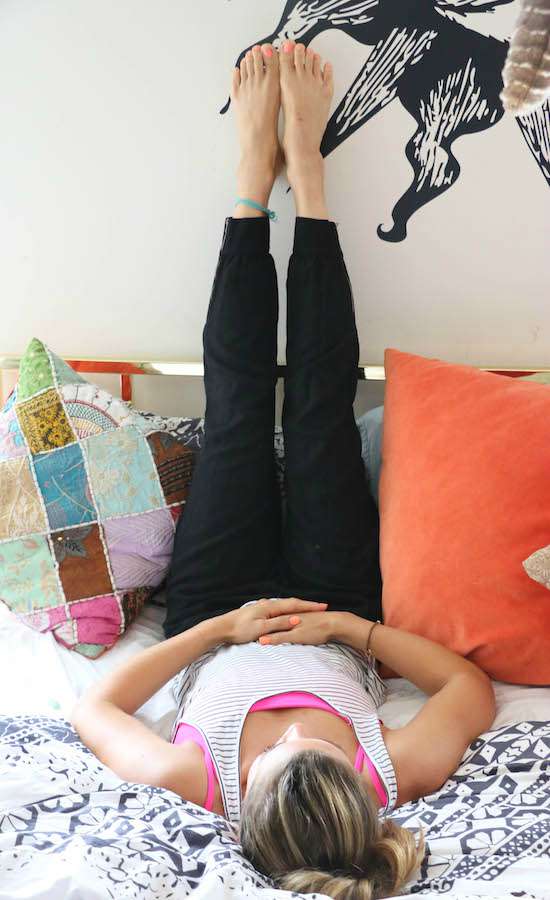When you think of active recovery, you’re probably wondering what makes it different than a rest day? Active recovery is part of training and yup it’s different than ‘passive recovery’.
While training, you should be paying attention to both active recovery and complete rest days throughout your training schedule. The volume of each may shift depending on the intensity of your workouts, training volume or simply how you’re feeling!
In this article, you’ll learn exactly what active recovery is, how it’s different from resting, and different ways you can incorporate active recovery into your training routine.
What is Active Recovery?
If you’re unsure what ‘active recovery’ means, think about how you generally spend a rest day. Typically, this would consist of a day of ‘passive recovery’, which is a day of full rest with no physical activity. The best kinds of rainy days for a Netflix marathon.
In comparison, an active recovery day includes low-intensity exercise or activity that increases blood flow to the muscles, aiding in recuperation.
By moving your body, you may accelerate the healing process. But there is a catch: you must be active enough to boost blood flow while being gentle enough to enable your muscles to repair.
On active recovery days, you should be mindful of your breathing and select a workout that promotes active recovery.
This implies that at the end of each of these sessions, you should feel rejuvenated, energetic, and ready for the next day’s training or workout routine.
What’s the Goal of Active Recovery?
Any recovery technique’s objective is to assist the body in reestablishing equilibrium.
Simply said, following complete recovery from exercise, you should feel revitalized, no longer sore, and physically prepared for the next run.
Active recovery aims to achieve this goal by increasing blood flow with low-intensity activity (30-60% of max heart rate), bringing oxygen-rich blood to tissues while also removing cellular waste created during exercise.
Consider active recovery as a strategy to increase the delivery of nutrients to your muscles, allowing them to recover and repair more quickly than they would if you sat on the couch.
Stop confusing rest days and active recovery days with being lazy or skipping training. They are training.
With all of our apps, run streak challenges and watches data saying unproductive and weekly messages like #nevermissamonday flooding our social feeds, it’s easy to feel like we MUST always be pushing. Plus, as runners we tend to thrive on our daily endorphin rush.
Add to that some old ideas we have about MORE = BETTER.
The more we work out…
…the faster we’ll be
…the more weight we’ll lose
…the better shape we’ll be in
The way we think about rest days is broken. Rest has become a four letter word in the cover your ears kind of sense.
I’m here to tell you that this is not so, my friends. In fact, skipping rest and recovery is one of the biggest mistakes runners make.
But I know that it’s not always so easy to immediately go from non-stop to a full no holds bar rest day. And the good news is that may not be exactly what you need!
So let’s reframe the way we think about rest days.
Perhaps by referring to them to as active recovery days…mm that sounds better already.
What’s the Difference Between Active Recovery and Rest Days?
Seeing the words ‘rest day’ in our training programs, most runners do one of two things:
- Rejoice over the fact that we get to be a couch potato
- Throw a tantrum because we’re not allowed to move for an entire day
Both of these assumptions are exaggerations and neither is exactly what should happen on a rest day.
Rest days (or passive recovery) mean to go about your daily activities, like errands, walking the dog, bike commuting, and light housework. Don’t help your friend move, paint the house, or overhaul the yard. Keep it simple and don’t go too crazy.
I know you see elite runners talking about runs on their rest days, but they aren’t juggling a full-time job, family, and everything else.
YOU NEED REST.
If your body is begging for a day off, then this is your chance to embrace the free time knowing that you’re making progress by sitting with a good running book. Period. Stop.
Now, if the thought of complete rest makes your eye twitch, then take an active recovery day.
Active rest days or active recovery workouts, on the other hand, are easy exercise sessions that help get the blood flowing to aid in muscle repair.
This is not the time to go all out on a high-intensity training session.
Rather, choose a low-impact workout that still gets your blood flowing and benefits your running.
Benefits of Active Recovery
Active rest days benefit runners in several important aspects:
- Minimizes the buildup of lactic acid in the muscles, which is responsible for stiffness and soreness in the days following a tough workout.
- Helps lower your heart rate. Athletes whose bodies recover more quickly to a resting heart rate level enjoy improved endurance over time.
- Retain strength and stamina from training after a hard effort (like race day). I am all for taking a running break after a marathon to allow muscle recovery, which then leads to HIGHER levels of fitness.
- Improve mobility and flexibility with workouts you’d otherwise skip entirely.
- Maintains a habit.This is one of the things I love most about not just sitting for the day. Instead, you get going at your standard workout time, maintaining the link in your brain that this is when you do sweaty things.
- Improves blood flow to muscles and joints which reduces the risk of inflammation to them.
When Should You Do Active Recovery?
You probably think you should spend the entire next day relaxing after completing a marathon, right? Surprisingly, active recovery training is preferable to doing nothing.
Active recovery is not limited to elite runners. Anyone who has completed an intense run or competed in an athletic event such as a race, or just pushed themselves to the limit the previous day should follow it up with a light workout the following day.
Simply said, if you’re wondering ‘should I do active recovery?’ following an intensive training day, the answer is usually yes. Resist the urge to do nothing and instead try a short, light exercise the next day.
How To Do Active Recovery
Always include active recovery days in your training schedule. Consider how many intense running days you have scheduled and plan an active rest day in between.
It’s less about determining how many active recovery days you should have per week and more about establishing a balance with the rest of your training schedule.
How long should a runner’s active recovery be? The goal is to get your body ready for the next day’s training without causing fatigue. Therefore, something light and simple that gets your blood flowing but does not tire you.
What Active Recovery Days Should Aim To Do?
Your active recovery days should aim to:
- Boost your heart rate and get you sweating without the added joint stress associated with traditional cardio or high-intensity interval training
- Increase blood flow to sore or stiff areas
- Pay attention to common areas that need work, like bad ankle mobility, tight hip flexors, and weak core or glutes.
When Should You Take a Rest Day?
While the advantages of active recovery are obvious, passive recovery is just as important. Pay attention to your body and determine whether a day or two off is warranted.
If you’ve been injured or are at risk of injury, it’s best to give your body time to heal before returning to light runs. If you’re in the thick of marathon training and feeling fatigued, take a rest day. If you’re not enjoying your runs, take a rest day.
Honestly, there are LOTS of great reasons to rest.
Otherwise, if you don’t listen to your body, you may wind up needing to take even more time off from running
Benefits of Rest Days
First, why do most training plans include a standard weekly rest day? A few of the things that happen on a running rest day:
- muscles to heal
- prevents overuse injuries
- increases your performance
- helps you to maintain a love of the sport
When we stop allowing ourselves a rest day or recovery day, the body gets frustrated because the equation is stress + rest = growth… without the rest, you’ve just got stress!
The way we think about rest days is broken! Time to consider active recovery, learn how to implement it! #runchat #bibchat #running Click To TweetSigns You’ve Been Neglecting Rest Days
When we stop allowing ourselves a rest day or recovery day, the body gets frustrated because the equation is stress + rest = growth… without the rest, you’ve just got stress!
Here are a few signs of overtraining, which means skipping the rest and often doing all your workouts too hard.
#1 Elevated resting heart rate.
Take your resting heart rate each morning for a week or so to get an idea of what is normal for you. An elevated heart rate can indicate exercise-related stress caused by increased oxygen flow to repair torn muscles.
Five to 10 beats over per minute could indicate that you’re in need of rest.
#2 Poor sleep or insomnia
Overtraining can wreak havoc on your sleep because your body is trying to repair all those torn muscles! Lack of sleep can result in slower reaction times, weaken the immune system, and decrease endurance.
#3 Moodiness
An overworked body may leave you feeling hungover, mentally exhausted, or even depressed over time. The body produces more hormones like cortisol that can trigger anxiety and cause irritability.
#4 Feeling haggard
If your workouts seem more difficult or you just simply can’t get through them, that is a surefire sign of exhaustion. Alternatively, with a compromised immune system from all the work your body is putting toward repairing the muscles, you’re likely to fall ill more often.
#nevermissamonday is outdated. Instead, let's talk about when to rest vs taking an active recovery day and why it's so important #running Click To TweetIf you’re nervous about how quickly do I lose fitness <<—- go read that.
How Many Rest Days Do I Need to Take Each Week?
The answer varies depending on your fitness level and workout intensity.
The standard plan says 1 running rest day per week, but as I’ve found with the athletes I coach, during base building they can often use that day for active recovery rather than full stop rest.
As the miles increase and they get closer to mid-late training cycles where the workouts are harder, that rest day becomes a welcome time to simply relax. Allowing the cortisol to drop and to feel rejuvenated for the coming miles.
Below I’ll talk first about active recovery and then about the 10 day training cycle, which could work better for those of you who don’t always feel you need a full rest day each week.
Active Recovery Workout Ideas
Cross training is super beneficial to runners because it helps prevent fatigue and burnout, plus it activates other muscle groups that running may miss.
These active recovery workouts aren’t meant to be long or intense. They can be as short as 10 minutes if you’re feeling tired or as long as an hour if you’re out strolling with a friend.
When I prescribe recovery days for my athletes, it usually focuses on three specific areas:
Yoga
Yoga for runners is a chance to slow down, work on your breathing, open tight hips and give you a chance to move without overdoing it.
I know you think you hate it, checkout that link to read more on why it’s going to help you!
Core Workout
I’ve talked a LOT about the benefits of core work, but I’m a real life example.
After knee surgery, my PT pointed out I needed core strength to help that knee continue feeling good. I started making core part of my week and always on my Monday recovery.
Going back a year later he stated “I can tell you’ve done the work because now your hips are stable, your movements are better and it’s translating all the way through your foot strike.”
Mobility Work
This is an overlooked area with massive benefits! Here’s a quick video of ideas, along with an explanation of how mobility works!
If you’re looking to switch things up and want some other recovery workout ideas, try one of these:
Steady-State or Non-Impact Cardio
This can be a low-intensity session on a treadmill, rowing, road, or stationary bike with the goal of maintaining a heart rate of 120-140 beats per minute (bpm), but nothing too intense.
Steady Intervals and Light Resistance
Combining steady state intervals in the form of no-impact cardio with bodyweight resistance exercises helps to increase blood flow to muscles and joints without putting the body under excessive strain.
This is not a time to increase strength, or performance. It is a light session designed to aid with recovery.
Stretching
If yoga isn’t your thing, some easy stretching the day after a long run or intense workout will assist support your body and start your healing process.
Self-Myofascial Release or Massage
Self-myofascial release, aka foam rolling and trigger point treatments are excellent for massaging inflamed and overworked muscles. This is because they increase blood flow to the area and so alleviate muscular tightness.
Using a foam roller is a great way to do active recovery as it can even help improve range of motion.
If you’re early in training or just feeling good, an active recovery day could also mean an easy hike, bike ride or swim. Learn to listen to your body!!
Looking for more training tips:
- Anti-Inflammatory Meals to Enhance Recovery
- Joint Health Tips for Runners
- How to Use Recovery Runs
- Are Massage Guns Worth the Cost?
- Rowing VS Running What’s a Better Workout?
Other ways to connect with Amanda
Instagram Daily Fun: RunToTheFinish
Facebook Community Chatter: RunToTheFinish
Sign Up to Receive a Weekly Newsletter with Top Running Tips





 39 Anti-inflammatory Recipes to Improve Recovery
39 Anti-inflammatory Recipes to Improve Recovery

JODI TIVEY
I love me a rest day! Always look forward to it. However, thanks to you, I am learning to occasionally embrace the active recovery day with a quick short walk or even just some stretching or foam rolling.
Mac Smith
Thank you so much for sharing! I love to have a rest day! Always looking for complete guidance. I really appreciate the things that are shared in the post.
Alexis
I embrace a rest day because my schedule makes me do so! Usually Thursday’s tend to be my long days at work, so I plan those as my rest days because it might end up as a rest day even if I wanted to do a run. Sunday’s are my active recovery/optional rest day, depending on my training load that week or what I’m doing. If I’m recovering from a Saturday half marathon, I always take Sunday off: https://runningmybestlife.com/half-marathon-recovery/
Shams
I was looking for something like this!! Thanks a lot for sharing.
Sarah Warren
I look forward to my rest day, although sometimes I will do some yoga.